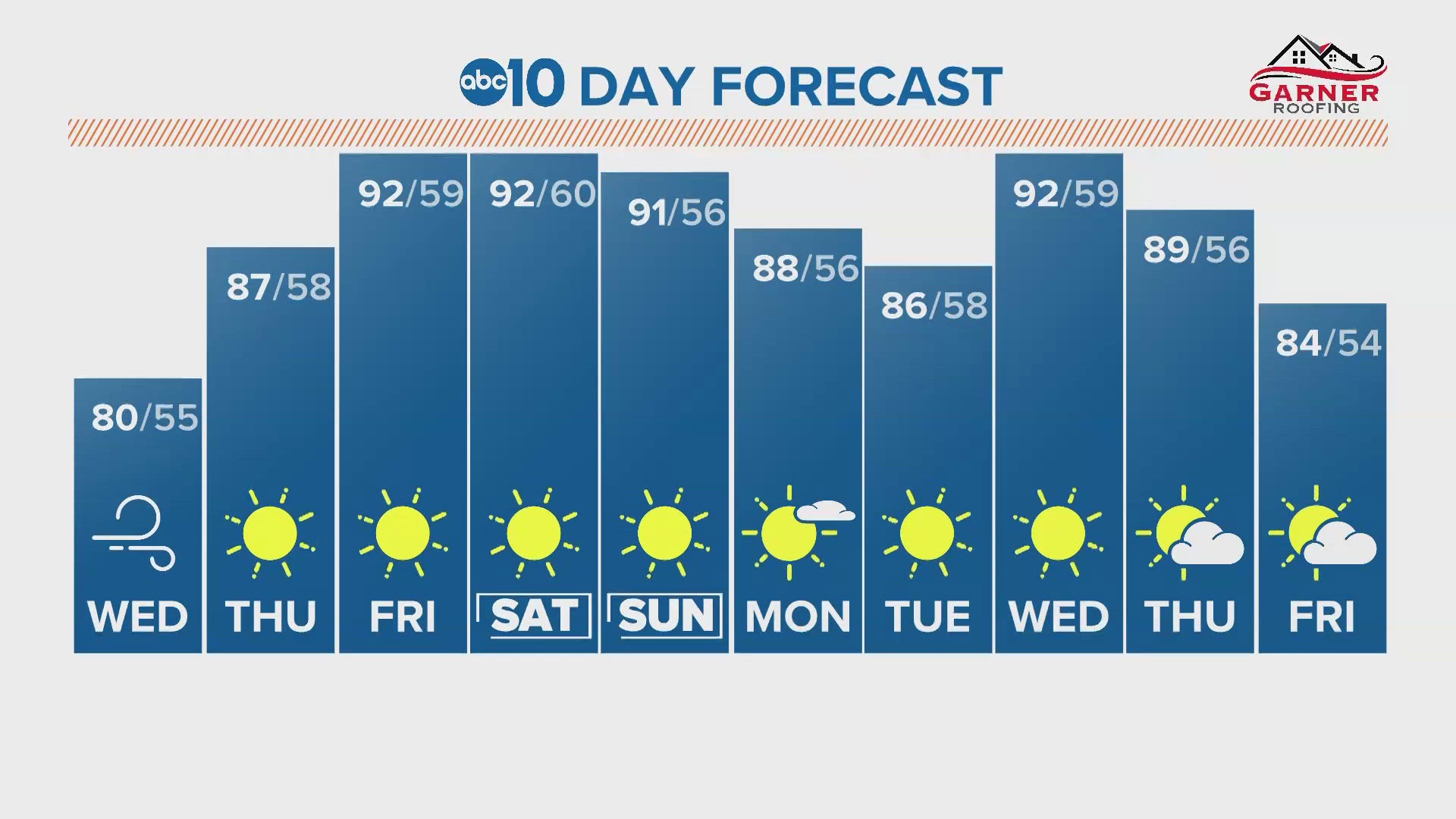SACRAMENTO, Calif —
Although the wet season got off to a slow start, a persistent El Niño-like weather pattern since the start of January allowed the Sierra snowpack to catch up to normal and even end up above average across most of the Sierra.
Northern California is finally settling into a warmer and drier pattern, which is to be expected this time of year. May represents the tail end of the wet season in Northern California and last weekend’s cold, wet storm was an anomaly. The Central Sierra Snow Lab and Palisades Tahoe received well over two-feet of snow, boosting an already stellar snowpack eventually feeding into the reservoirs.
Regardless, the melt-off period is well underway and reservoirs will continue to rise through the early summer.
The Northern Sierra, which supplies snowmelt to the two most vital reservoirs in the state (Shasta and Oroville), is at 131% of average to date. With plenty of snowpack left to melt, Shasta, Oroville and Folsom are all conducting water releases.
As of May 8, Shasta is at 97% of capacity (115% of historical average), Oroville is at 100% (128% of historical average) and Folsom is 89% full (118% of historical average).
Lake Trinity, located to the northwest of Lake Shasta, is at 85% of capacity, an impressive increase from a year ago when it was only at 38%.
Due to Folsom Lake being smaller than the other bodies of water listed, it fluctuates more in terms of percent of capacity. Two months ago it was only at 66% of capacity.
After the melt-off period last spring and early summer, Lake Shasta — the keystone of the Central Valley Project — was at 98% capacity, Oroville was at 100% capacity and Folsom Lake was nearly full at 95% capacity. These bodies of water were quite parched heading into the winter due to the three years of drought preceding the past winter's deluge and ranged from 25-32% capacity before the atmospheric river events rolled in.



















